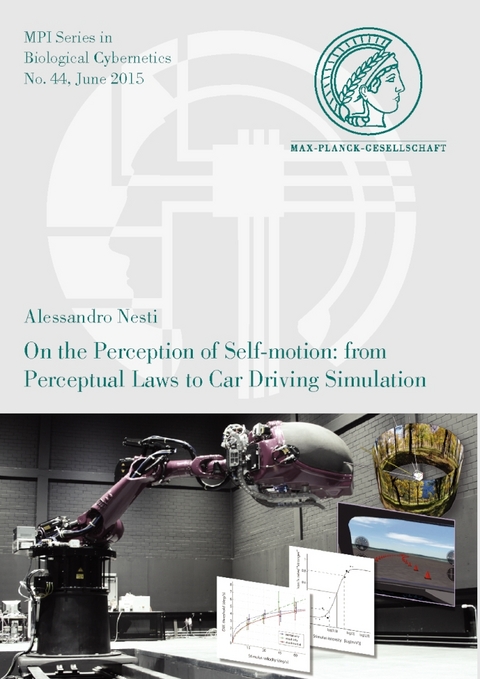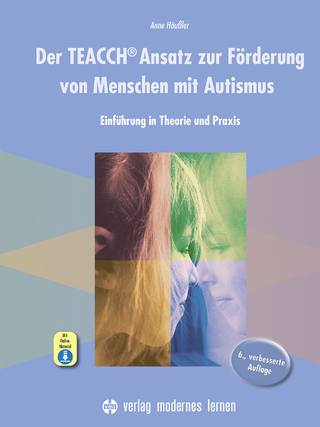
On the Perception of Self-motion: from Perceptual Laws to Car Driving Simulation
Seiten
2015
Logos Berlin (Verlag)
978-3-8325-4013-5 (ISBN)
Logos Berlin (Verlag)
978-3-8325-4013-5 (ISBN)
- Keine Verlagsinformationen verfügbar
- Artikel merken
Everyday life requires humans to move through the environment, while completing crucial tasks such as retrieving nourishment, avoiding perils or controlling motor vehicles. Success in these tasks largely relies in a correct perception of self-motion, i.e. the continuous estimation of one's body position and its derivatives with respect to the world. The processes underlying self-motion perception have fascinated neuroscientists for more than a century and large bodies of neural, behavioural and physiological studies have been conducted to discover how the central nervous system integrates available sensory information to create an internal representation of the physical motion. The goal of this PhD thesis is to extend current knowledge on self-motion perception by focusing on conditions that closely resemble typical aspects of everyday life. In the works conducted within this thesis, I isolate different components typical of everyday life motion and employ psychophysical methodologies to systematically investigate their effect on human self-motion sensitivity. Particular attention is dedicated to the human ability to discriminate between motions of different intensity. How this is achieved has been a fundamental question in the study of perception since the seminal works of Weber and Fechner. When tested over wide ranges of rotations and translations, participants' sensitivity (i.e. their ability to detect motion changes) is found to decrease with increasing motion intensities, revealing a nonlinearity in the perception of self-motion that is not present at the level of ocular reflexes or in neural responses of sensory afferents. The relationship between the stimulus intensity and the smallest intensity change perceivable by the participants can be mathematically described by a power law, regardless on the sensory modality investigated (visual or inertial) and on whether visual and inertial cues were presented alone or congruently combined, such as during natural movements. Individual perceptual law parameters were fit based on experimental data for upward and downward translations and yaw rotations based on visual-only, inertial-only and combined visual-inertial motion cues. Besides wide ranges of motion intensities, everyday life scenarios also provide complex motion patterns involving combinations of rotational and translational motion, visual and inertial sensory cues and physical and mental workload. The question of how different combinations of these factors affect motion sensitivity was experimentally addressed within the framework of driving simulation and revealed that sensitivity might strongly decrease in more realistic conditions, where participants do not only focus on perceiving a 'simple' motion stimulus (e.g. a sinusoidal profile at a specific frequency) but are, instead, actively engaged in a dynamic driving simulation. Applied benefits of the present thesis include advances in the field of vehicle motion simulation, where knowledge on human self-motion perception supports the development of state-of-the-art algorithms to control simulator motion. This allows for reproducing, within a safe and controlled environment, driving or flying experiences that are perceptually realistic to the user. Furthermore, the present work will guide future research into the neural basis of perception and action.
Die Kunst der Übersetzung
| Erscheint lt. Verlag | 30.6.2015 |
|---|---|
| Reihe/Serie | MPI Series in Biological Cybernetics ; 44 |
| Sprache | englisch |
| Maße | 145 x 210 mm |
| Einbandart | Paperback |
| Themenwelt | Geisteswissenschaften ► Psychologie ► Biopsychologie / Neurowissenschaften |
| Medizin / Pharmazie ► Medizinische Fachgebiete ► Orthopädie | |
| Naturwissenschaften | |
| Schlagworte | Differential thresholds • Driving Simulation • multisensory integration • self-motion perception |
| ISBN-10 | 3-8325-4013-X / 383254013X |
| ISBN-13 | 978-3-8325-4013-5 / 9783832540135 |
| Zustand | Neuware |
| Haben Sie eine Frage zum Produkt? |
Mehr entdecken
aus dem Bereich
aus dem Bereich
Grundlagen, Klinik, Rehabilitation
Buch | Softcover (2024)
Urban & Fischer in Elsevier (Verlag)
56,00 €
Buch | Spiralbindung (2022)
modernes lernen (Verlag)
29,95 €
Grundlagen, Klinik, Therapie und Verlauf der …
Buch | Softcover (2024)
Kohlhammer (Verlag)
84,00 €


